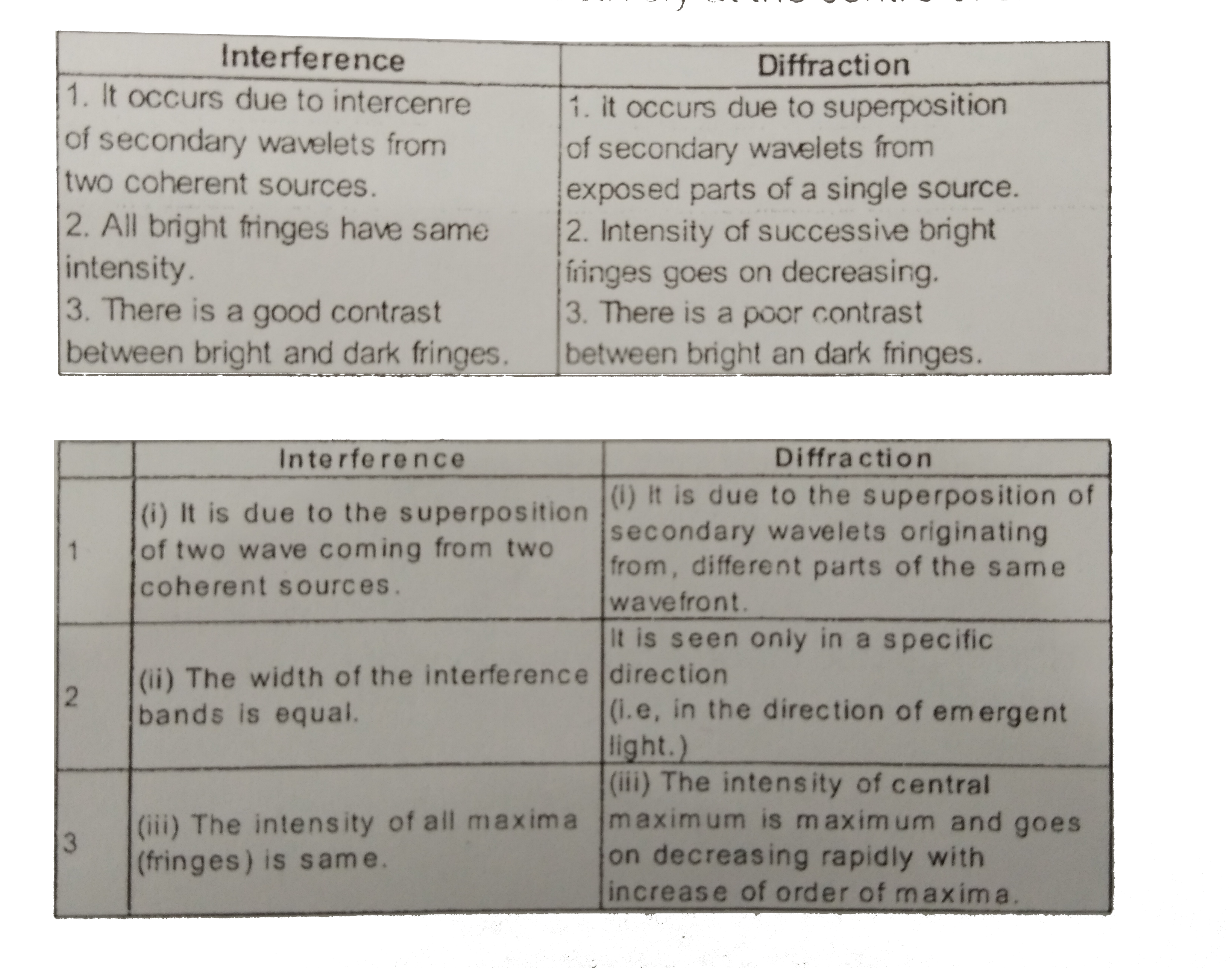In a single slit diffraction experiment when a tiny circular obstacle is placed in the path of light from a distance source, a bright spot is seen at the centre of the shadow of the obstacle. Explain why ?
State two points of difference between the interference pattern in Young's double slit experiment and the diffraction pattern due to a slit.
In a single slit diffraction experiment when a tiny circular obstacie is placed in the path of light from a distance source, a bright spot is seenat the centre of the shadow of the obstacle. Because the waves diffracted from the edges interfere interfere constructively at the centreof shadow thus forming bright spot there.

Topper's Solved these Questions
Similar Questions
In a singleslit diffraction experiment, when a tiny circular obstacle is placed in the path of light from a distant source, a bright spot is seen at the centre of the shadow of the obstacle. Explain why ?
State two points of difference the interference pattern obtained in Young's double slit experiment and the diffraction pattern due to a single slit.
View SolutionWhen a tiny circular obstacle is placed in the path of light from distant source. A bright spot is seen at the centre of the obstacle . Explain why.
View Solution
Knowledge Check
Assertion (A) : When tiny circular obstacle is placed in the path of light from some distance, a bright spot is seen at the centra of the shadow of the obstacle.
Reason (R ) : Destructive interference occurs at the centre of the shadow.ABoth 'A' and 'R' are true and 'R' is the correct explanation of 'A'BBoth 'A' and 'R' are true and 'R' is not the correct explanation of 'A'CA' is true and 'R' is falseDA' is false and 'R' is trueA: When a tiny circular obstacle is placed in the path of light from a distant source, a bright spot is seen at the centre of the shadow of the obstacle.
R: Waves diffracted from the edge of the circular obstacle interfere constructively at the centre of the shadow producing a bright spot.AIF both Assertion & Reason are true and the reason is the correct explanation of the assertion, then mark (1).BIf both Assertion & Reason are true but the reason is not the correct explanation of the assertion, then mark(2)CIF Assertion is true statement but Reason is false then mark(3)DIf both Assertion and Reason are false statements, then mark (4)
(a) Explain two features to distinguish between the interference pattern in Young's double slit experiment with the difference pattern obtained due to a single slit.
(b) A monochromatic light of wavelength 500nm is incident normally on a single slit of width 0.2 nm of produce a diffraction pattern. Find the angular width of the central maximum obtained on the screen.
Estimate the number of fringes obtained in Young's double slit experimental with fringe width 0.5mm, which can be accommodated within the region of total angular spread of the central maximum due to single slit.
View SolutionA : When tiny circular obstacle is placed in the path of light from some distance, a bright spot is seen at the centre of the shadow of the obastacle.
R : Destructive interference occurs at the centre of the shadow of circular obstacle.
View SolutionA: When a tiny circular obstacle is placed in the path of light from a distant source, a bright spot is seen at the centre of the shadow of the obstacle.
R: Waves diffracted from the edge of the circular obstacle interfere constructively at the centre of the shadow producing a bright spot.
View SolutionIn what way is diffraction from each slit related to the interference pattern in a double-slit experiment?
View SolutionDo you think that interference pattern in Young's double slit experiment is the consequence of the superposition of the diffracted waves from the two slits?
View SolutionCompare the interference pattern observed in Young’s double slit experiment with single slit diffraction pattern, pointing out three distinguishing features.
View Solution
